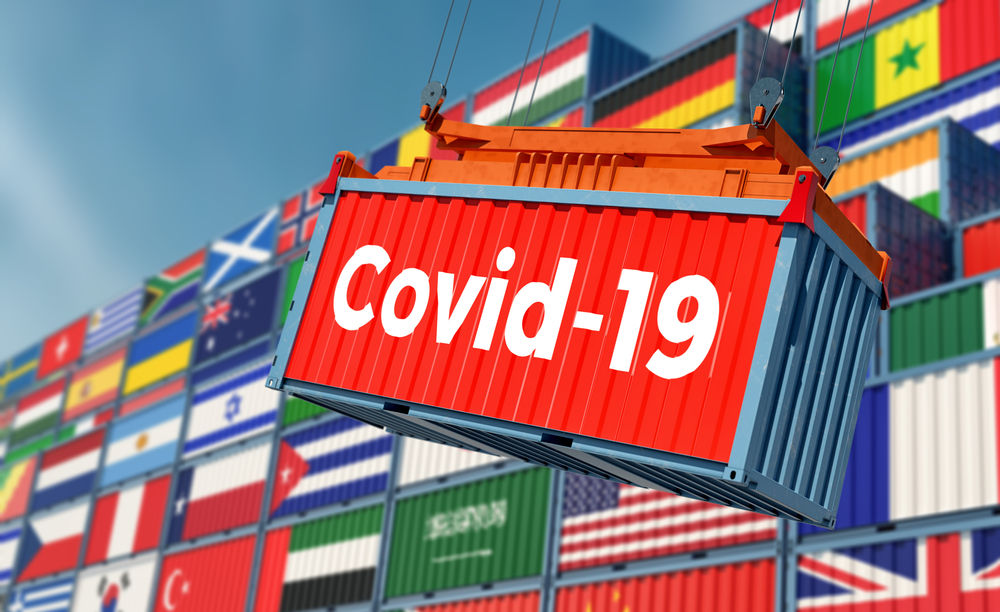2021 Tech Trends to Improve Your Business

Focused on your workforce, customers, and operations, these tech trends can help your business stay competitive this 2021 and beyond.
Given all the challenges your company successfully faced in 2020, what trends can keep your organization agile, adaptive, and future-proof? We focus on 2021 technology trends for your workforce, your customers, and your business.
Your workforce
Look to the cloud
The pandemic has proven that cloud computing is essential to keeping companies adaptable, responsive, and resilient. This year, cloud native technology will continue to push digital transformation.
By the end of 2021, 60% of companies will leverage containers on public cloud platforms, while 25% of developers will leverage serverless computing, according to research firm Forrester. The report also predicts that on-premises disaster recovery (DR) will be less of a priority, with an additional 20% of enterprises shifting DR operations to the cloud.
With traditional technologies, a company will need months to establish and deploy new structures. “In our reshaped reality, new products and services have to be ‘ready tomorrow’ and there’s an expectation for time-to-market and time-to-value to be realized faster than ever,” says technology services company NTT.
(Also read: The Future of Work: Is Remote Work Here to Stay?)
Digital tools for continuous collaboration
Collaboration tools kept company communication lines open and sustained employee productivity despite the global health crisis. As organizations shift to a hybrid workforce, technology that creates inclusive collaboration spaces is integral to a successful transition.
In a survey conducted by PricewaterhouseCoopers, 72% of respondents revealed that they plan to invest in virtual collaboration tools to support hybrid working.
(Also read: Collaboration and Engineering in Our New Normal)
Your customer experience
Improve customer interactions with intelligent technologies
Efficiency and personalization are key to a good customer experience, which can make or break a company. AI can ensure customers feel that you value their time and their business. According to Microsoft, as many as 95% of customer interactions will be through artificial intelligence (AI) by 2025.
Customer service teams can employ AI to handle simple queries in real time, collecting information until a live agent is needed. This reduces waiting time and customer frustration. Companies can automate routine tasks, giving live agents more time for value-added interactions. They can recommend personalized services and products to customers, increasing their conversion rate.
While many businesses have employed AI to address customer needs, it would do well to maximize this technology at each point throughout the customer journey.
Greater focus on omnichannel
The omnichannel approach--placing the customer, and not the product, at the center of your business--is not new. But as more transactions are done digitally, companies need to make sure that their customer service channels are truly connected.
No matter the platform, consumers want a consistent and highly personalized experience. If customers have to repeat details via email or on live chat, they will get frustrated and take their business elsewhere. A successful omnichannel customer experience seamlessly integrates online and offline communication channels, fostering brand equity and driving sales.
Hyper-personalized, blended physical and digital customer experiences
The digital world has its merits--convenience, accessibility, speed--but it cannot compare with the camaraderie and connection that comes with human interaction.
Today’s customer is no longer satisfied with one or the other. A survey conducted by Deloitte revealed that ⅔ of respondents tried a new digital experience, ranging from social gatherings to virtual concerts to government transactions. In the beginning, these alternatives seemed adequate, but digital fatigue eventually set in.
Deloitte predicts that in the next 18 to 24 months, online and offline interactions will no longer be separate. Instead, the customer journey will be composed of in-person and digital elements that are “integrated and intentionally designed to create a seamless brand experience that’s tailored to fit the individual customer’s behaviors, attitudes, and preferences.”
Your business
5G and IoT will revolutionize manufacturing
International Data Corporation (IDC) predicts that global revenue from sales of private LTE/5G infrastructure will reach USD5.7 billion in 2024, up from just USD945 million in 2019.
The low latency, fast data speed, and high bandwidth of 5G will boost the productivity, agility, and speed of manufacturing. The reliability of 5G connectivity ensures the continuous execution of business-critical missions, with factory systems reacting in real time.
Through data collection and analysis from IoT devices, manufacturers can gain actionable insights from real-time interactions among systems, machines, and assets. Smart sensors will further drive automation, enabling more self-regulating and self-adjusting processes to facilitate higher productivity and agility.
(Also read: Technology to Future-Proof Supply Chains)
From IoT to IoB
With its interconnected devices, the Internet of Things (IoT) is a portal for collecting information on users. The “digital dust” of daily life, this data can be used to influence human behavior.
For example, telematics in commercial vehicles can track driving behaviors, from an aggressive lane change to sudden braking. Companies can use that information to improve driver performance and safety.
A health app on your smartphone monitors your sleep patterns, heart rate, or diet. The app can then suggest modifications to your behaviors to improve your health.
The IoT gathers data and turns it into information. The IoB (Internet of Behaviors) transforms that information into knowledge. Think of IoB as the intersection of technology, data analytics, and behavior science. IoB can inform business decisions, from product development to customer service to sales and marketing strategies.
However, knowledge is power, and how you wield it raises ethical, security, and privacy concerns. Should all this knowledge gathered at scale fall into the wrong hands, the repercussions could be damaging.
Cybersecurity is more important than ever
In the first quarter of 2020, distributed denial-of-service (DDoS) attacks rose more than 278% year over year, and more than 542% compared to the last quarter.
A digitally-enabled business model gives you a competitive advantage. Establish and strengthen measures to protect it. Security Innovations President and CEO Ed
Adams enumerates five cybersecurity trends executives should watch out for this 2021:
- Because of accelerated digital and cloud transformation, software security must shift its focus from vulnerability-based to risk-based security.
- Companies must protect themselves from AI-fueled attacks through continuous automated red-teaming (CART).
- Because more than 85% of a modern enterprise application is written by a third party provider, the company’s information security has no access to the source code. Security training and implementation will be distributed across teams that develop, operate, and defend these applications.
- With the rise of remote work, WFH employees are a weak spot in the company. Because of this, software developers will espouse threat modeling.
- Cybersecurity Ventures predicts that a business will be hit by a ransomware attack every 11 seconds--making ransomware the fastest-growing type of cybercrime.
People-centric, data-driven, and digital-first, these technology trends will enhance your customer experience, empower your workforce, and optimize your business.
As one of the Top 20 EMS companies in the world, IMI has over 40 years of experience in providing electronics manufacturing and technology solutions.
At IMI, we believe that humanity drives technology, and we direct our passion at solutions that enhance our way of living. With more than 400,000 square meters of factory space in 22 factories across 10 countries, we are positioned to build your business on a global scale.
Our proven technical expertise, worldwide reach, and vast experience in high-growth and emerging markets make us the ideal global manufacturing solutions partner.
Let's work together to build our future today.
Other Blog



